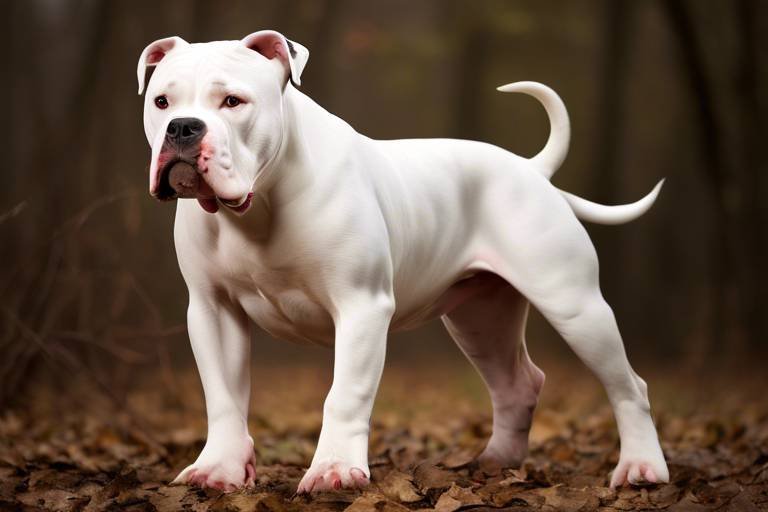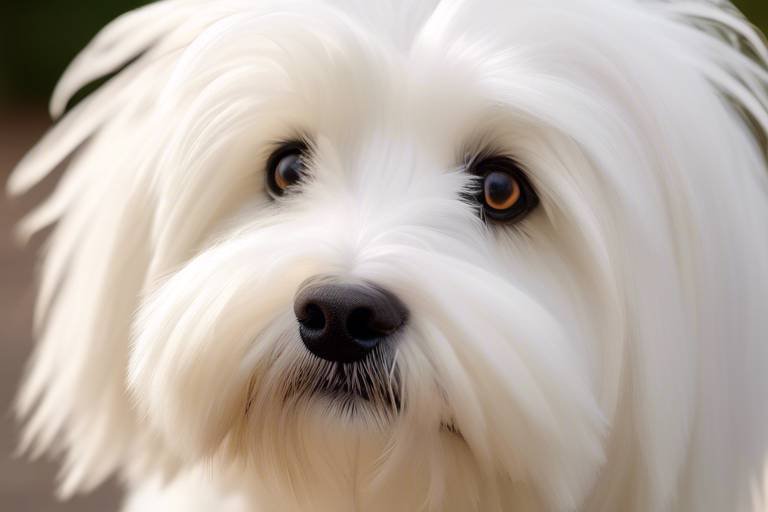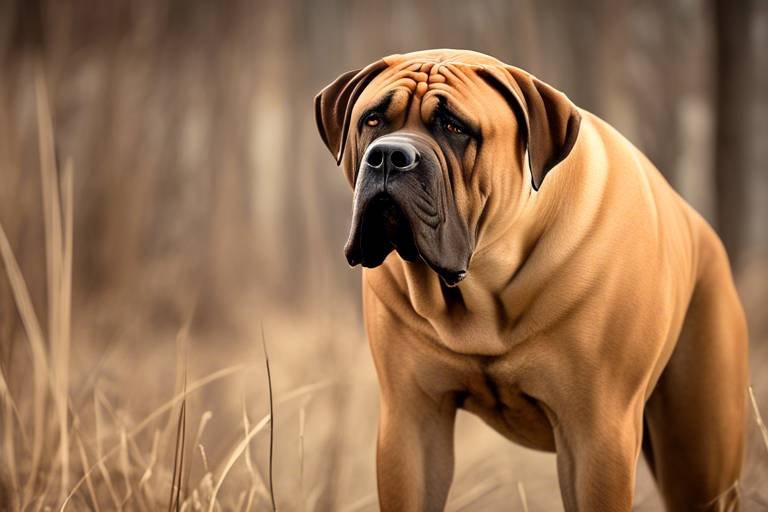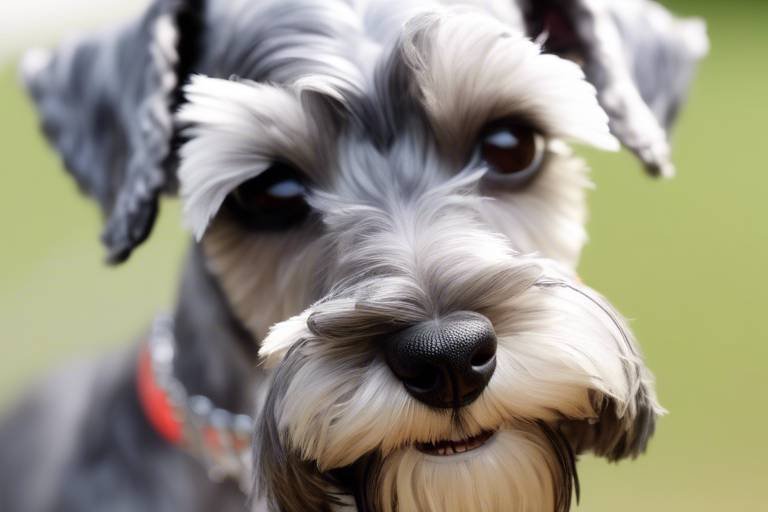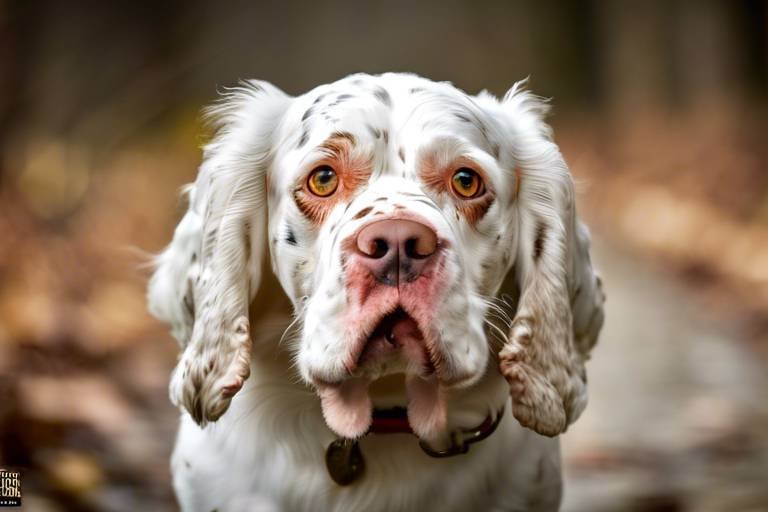Understanding the Characteristics of the American Bulldog
The American Bulldog is more than just a pet; it’s a loyal companion, a protector, and a friend. With roots tracing back to the working dogs of the American South, this breed embodies strength and versatility. They have captured the hearts of many dog lovers with their unique blend of physical prowess and affectionate nature. But what exactly makes the American Bulldog stand out? In this article, we will delve into their distinctive traits, behaviors, and history, providing valuable insights for potential owners and enthusiasts alike.
American Bulldogs are known for their impressive muscular build and a broad head that exudes strength and agility. Their physique is not just for show; it’s a testament to their heritage as working dogs. Typically, they have a short coat that comes in various colors, including white, brindle, and fawn, making them visually striking companions. These dogs often weigh between 60 to 120 pounds, depending on their gender and lineage. Their strong jaws and powerful stance make them look imposing, yet their warm eyes reveal a gentle spirit.
When it comes to personality, American Bulldogs are known for their remarkable loyalty and protective nature. They are often described as affectionate and loving, especially towards their families. Understanding their temperament is crucial for training and socialization, which helps ensure they thrive as loving pets. They are not only loyal but also intelligent, which means they require mental stimulation and engagement to keep them happy. A bored American Bulldog can become mischievous, so it’s essential for owners to provide a stimulating environment.
American Bulldogs typically exhibit a friendly demeanor towards humans, but they may be wary of strangers. This protective instinct can be beneficial, but it also emphasizes the need for early socialization. Exposing them to various environments, people, and other animals while they are young can help develop a well-adjusted adult dog. The more experiences they have, the more confident and less anxious they will be in new situations.
One of the most heartwarming aspects of the American Bulldog's temperament is their bond with children. These dogs often form strong connections with kids, making them excellent family pets. However, it’s crucial to supervise interactions to enhance their protective instincts while ensuring safety and fun. With the right guidance, American Bulldogs can be gentle giants, playing and protecting their little human companions.
While American Bulldogs can coexist with other animals, proper introductions and training are essential to prevent territorial behaviors. They can be quite dominant, so it's important to establish boundaries and promote harmony in multi-pet households. With patience and consistent training, many American Bulldogs can learn to share their space and even become friends with other pets.
Training an American Bulldog requires a blend of consistency and positive reinforcement. Their intelligence and eagerness to please make them responsive to effective training methods. Using treats, praise, and playtime as rewards can significantly enhance their learning experience. A well-trained American Bulldog is not only a joy to have but also a well-behaved member of the family.
American Bulldogs are active dogs that need regular exercise to maintain their physical and mental health. Daily walks, playtime, and engaging activities are vital for their well-being. Without sufficient exercise, they may become restless or develop behavioral issues. A good rule of thumb is to aim for at least 60 minutes of exercise each day, tailored to their energy levels and age.
Activities such as agility training, fetch, and obedience classes provide both mental stimulation and physical exercise, enhancing the bond between the dog and its owner. Engaging in these activities not only keeps them fit but also helps in channeling their energy positively. Here are some fun activities to consider:
- Agility training
- Interactive fetch games
- Obedience classes
- Swimming sessions
Recognizing signs of boredom is essential for keeping your American Bulldog happy. Destructive behavior, excessive barking, or even digging can be indicators that they need more stimulation. By adjusting their routines and incorporating more activities, owners can keep their American Bulldogs engaged and content.
Understanding common health issues in American Bulldogs, such as hip dysplasia and skin allergies, is essential for responsible ownership. Being proactive about their health can lead to a long, fulfilling life. Regular veterinary check-ups and a keen eye for any changes in behavior or appearance can help catch potential issues early.
Regular veterinary check-ups, a balanced diet, and appropriate exercise can help prevent many health issues, promoting the overall well-being of American Bulldogs. Owners should also be mindful of their dog's weight, as obesity can lead to various health problems.
Being aware of genetic predispositions can aid in making informed decisions regarding breeding and health screenings, ultimately contributing to the breed's longevity and vitality. Responsible breeding practices can help mitigate some of these health concerns, ensuring healthier puppies in the future.
In summary, American Bulldogs are loyal, intelligent, and strong companions. Understanding their characteristics, needs, and potential challenges is key to providing them with a fulfilling life. With the right care, training, and love, these dogs can be wonderful additions to any family.
- What is the average lifespan of an American Bulldog?
The average lifespan is around 10 to 16 years, depending on health and care. - Are American Bulldogs good with children?
Yes, they are known for their strong bonds with children and can be excellent family pets. - Do American Bulldogs require a lot of exercise?
Yes, they need at least 60 minutes of exercise daily to stay healthy and happy. - How can I help my American Bulldog socialize?
Early exposure to different environments, people, and pets is crucial for their social development.
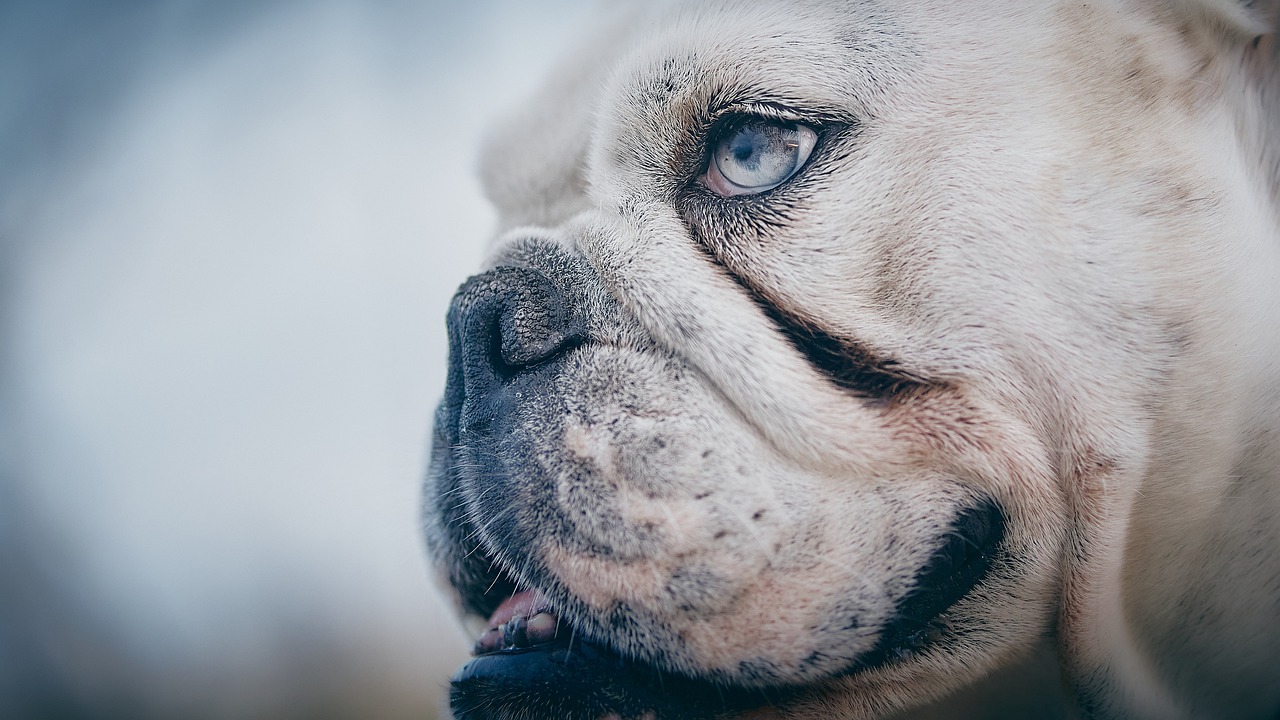
Physical Traits
This article explores the unique traits, behaviors, and history of the American Bulldog, providing insights for potential owners and enthusiasts about this loyal and versatile breed.
American Bulldogs are truly a sight to behold, boasting a muscular build that speaks to their strength and agility. With a broad head and a powerful jaw, these dogs are designed for both physical prowess and captivating aesthetics. Their coat is short and comes in a variety of colors, including white, brindle, and a mix of both, making each American Bulldog visually striking in its own right. This breed's appearance is not just for show; it reflects their hardworking and tenacious nature.
One of the most notable features of the American Bulldog is their strong physique. They are well-proportioned, with a broad chest and sturdy legs that allow for both speed and endurance. This combination of strength and agility makes them excellent companions for active owners. Typically, adult American Bulldogs weigh between 60 to 120 pounds and stand about 20 to 28 inches tall at the shoulder, depending on their gender and lineage. Here’s a quick overview:
| Trait | Description |
|---|---|
| Weight | 60 to 120 pounds |
| Height | 20 to 28 inches |
| Coat | Short, various colors |
In addition to their physical attributes, American Bulldogs possess a confident demeanor. Their posture and movements exude a sense of self-assuredness, which can be quite impressive. However, it's important to remember that with such strength comes a responsibility for owners to provide proper training and socialization. Without guidance, their natural instincts can lead to unwanted behaviors.
Another fascinating aspect of their physical traits is their facial structure. American Bulldogs often have a pronounced muzzle and expressive eyes that can convey a range of emotions. This facial expressiveness makes them incredibly relatable companions. Their ears can be either cropped or left natural, adding further to their unique appearance. In essence, the American Bulldog is a perfect blend of strength, beauty, and personality.
In summary, the physical traits of the American Bulldog are not just about looks; they reflect the breed's history and purpose. Whether you're drawn to their muscular build or their striking appearance, understanding these traits is essential for anyone considering bringing one of these loyal dogs into their home.
- What is the lifespan of an American Bulldog? The average lifespan is around 10-15 years.
- Do American Bulldogs shed a lot? They have a short coat and shed moderately.
- Are American Bulldogs good with children? Yes, they are known for being affectionate and protective.
- How much exercise do they need? They require regular exercise, including daily walks and playtime.
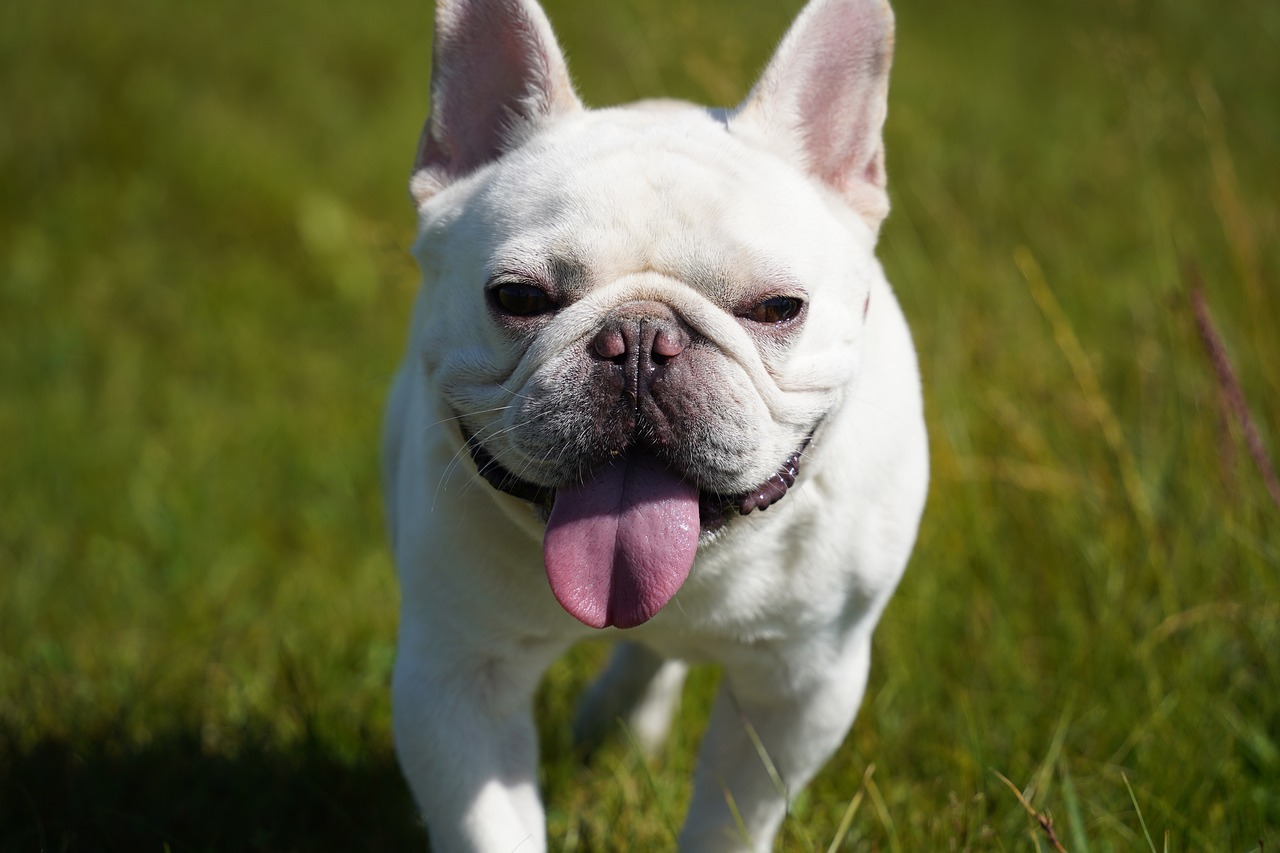
Temperament
The American Bulldog is not just a breed; it's a personality packed into a strong, muscular frame. Known for their loyalty and protective nature, these dogs often form deep bonds with their families. Their affectionate demeanor makes them a popular choice for households looking for a loving companion. But, like any breed, understanding their temperament is essential for potential owners. Have you ever wondered how a dog can balance being both a fierce protector and a gentle giant? Well, the American Bulldog does just that!
One of the most notable traits of the American Bulldog is their intelligence. They are quick learners, which can be both a blessing and a challenge. This breed thrives on positive reinforcement techniques during training. They respond well to praise and treats, making training sessions not just effective but also enjoyable. Imagine teaching a dog to fetch using their favorite toy; the excitement in their eyes is worth every moment spent training!
When it comes to social interactions, American Bulldogs generally exhibit a friendly demeanor towards humans. However, they can be a bit wary of strangers, which makes early socialization crucial. Think of it like teaching a child to be confident in new situations; the more exposure they have, the better they adapt. Regular interactions with different people and environments can help develop a well-adjusted adult dog. This breed is known to be quite protective of their family, which can be a wonderful trait when managed properly.
One of the most heartwarming aspects of the American Bulldog's temperament is their relationship with children. These dogs often form strong bonds with kids, making them excellent family pets. They possess a natural instinct to protect, which can enhance their interactions with younger family members. However, just like any dog, it's essential to supervise their interactions to ensure safety and fun. Imagine a scenario where your dog plays fetch with your child; the joy and laughter that ensue can create lasting memories for both!
While American Bulldogs can coexist with other animals, it’s important to introduce them properly. Without the right introductions and training, territorial behaviors can arise, leading to conflicts in multi-pet households. Think of it like moving into a new neighborhood; you wouldn’t barge into someone’s house without a proper introduction! A gradual introduction process can help promote harmony and ensure that all pets feel comfortable in their shared space.
Training an American Bulldog requires consistency and patience. Their eagerness to please makes them highly trainable, but it also means they need clear boundaries. Using a mix of commands, treats, and playtime can keep training engaging. Just like a student who thrives in a supportive classroom, American Bulldogs flourish when they feel encouraged and understood. Regular training sessions not only enhance their behavior but also strengthen the bond between dog and owner.
Social Behavior
When it comes to the of American Bulldogs, there's a lot more than meets the eye. These dogs are known for their friendly demeanor, especially towards their human companions. However, they can be a bit cautious when it comes to strangers. Imagine a loyal bodyguard who stands firm yet is deeply affectionate with their family—that's the essence of an American Bulldog. Early socialization is paramount for these dogs; it’s like giving them a toolkit to navigate the world confidently.
Socialization should start as early as possible, ideally when they are still puppies. This involves exposing them to a variety of people, environments, and other animals. Think of it as teaching them the ropes of social etiquette. The more experiences they have, the better equipped they will be to handle new situations without anxiety or aggression. A well-socialized American Bulldog will be more relaxed and adaptable, making them a joy to have around.
It’s also important to note that American Bulldogs can exhibit protective behaviors, especially towards their families. This protective instinct is a double-edged sword; while it makes them excellent guardians, it can also lead to wariness around unfamiliar faces. Therefore, ensuring that your American Bulldog is comfortable with new people is crucial. Regularly inviting friends over or taking them to dog parks can help build their confidence and reduce any apprehension.
In multi-pet households, the social behavior of American Bulldogs can vary significantly. Some may embrace the company of other animals, while others might display territorial tendencies. Proper introductions are essential here. It’s like hosting a party; you want to make sure everyone gets along and feels welcome. Gradually introducing your American Bulldog to other pets, under supervision, can foster a peaceful coexistence.
To summarize, the social behavior of American Bulldogs is characterized by loyalty, affection, and a protective nature. By investing time in socialization and training, you can help your American Bulldog become a well-adjusted member of your family and community. The effort you put into their social development will pay off in the form of a loving, confident, and friendly companion.
- What is the best age to start socializing my American Bulldog?
It is best to start socializing your American Bulldog as early as 8 weeks old. Early experiences will help shape their behavior as adults. - How can I help my American Bulldog be more comfortable around strangers?
Gradual exposure to new people, rewarding calm behavior, and ensuring positive experiences can help your dog feel more at ease. - Are American Bulldogs good with children?
Yes! American Bulldogs are known for forming strong bonds with children and can be excellent family pets when properly socialized. - Can American Bulldogs live peacefully with other pets?
Yes, they can coexist with other pets, but introductions should be handled carefully to avoid territorial behavior.
Interaction with Children
When it comes to interacting with children, American Bulldogs are often seen as gentle giants. Their robust physique might make them appear intimidating at first glance, but their true nature is that of a loving and protective companion. These dogs tend to form strong bonds with children, displaying a natural instinct to watch over and care for them. Imagine a loyal guardian, always ready to play and protect; that’s the essence of an American Bulldog with kids!
However, just like any breed, the interaction between American Bulldogs and children should be approached with a bit of caution. It’s essential to supervise their playtime, especially with younger children, to ensure that both the dog and the child are safe and comfortable. Here are a few tips to ensure a harmonious relationship:
- Teach Respect: Children should learn to respect the dog’s space and not disturb them while they are eating or sleeping.
- Supervised Play: Always supervise playtime to prevent any accidental roughhousing that could lead to injuries.
- Positive Reinforcement: Use treats and praise to encourage gentle interactions between the dog and the child.
American Bulldogs are known for their playful nature, and they often enjoy engaging in activities that involve children, such as fetch or tug-of-war. These games not only provide physical exercise but also strengthen the bond between the dog and the child. In fact, many American Bulldogs thrive in family environments where they can be part of the action, turning ordinary moments into cherished memories.
In conclusion, the interaction between American Bulldogs and children can be a beautiful relationship filled with love and adventure. By ensuring proper supervision and teaching children how to interact respectfully, families can enjoy the loyal companionship of these remarkable dogs. They truly can be the perfect playmate, always ready for fun and games, while also serving as a protective friend.
Here are some common questions regarding American Bulldogs and their interactions with children:
- Are American Bulldogs good with toddlers?
Yes, American Bulldogs can be great with toddlers when properly socialized and supervised. Their gentle demeanor often makes them a good fit for families with young children. - How should I introduce my American Bulldog to my child?
Introduce them slowly and in a controlled environment. Allow the dog to approach the child while ensuring the child remains calm. Positive reinforcement can help create a positive association. - Can American Bulldogs be trusted around children?
With proper training, socialization, and supervision, American Bulldogs can be trusted around children. They are known for their loyalty and protective instincts.
Compatibility with Other Pets
When it comes to , American Bulldogs can be quite adaptable, but there are a few key considerations to keep in mind. These dogs are known for their strong personalities and protective instincts, which can sometimes lead to territorial behaviors, especially if they feel their space is being invaded. However, with the right approach, they can coexist peacefully with other animals in the household.
To ensure a harmonious environment, proper introductions are crucial. When bringing an American Bulldog into a home with existing pets, it’s best to:
- Introduce them in a neutral space to minimize territorial instincts.
- Supervise initial interactions closely to monitor behavior.
- Use positive reinforcement to reward calm and friendly behavior.
It's also important to recognize that American Bulldogs can exhibit varying levels of compatibility depending on their individual personalities and prior experiences with other animals. Some may become fast friends with cats or other dogs, while others may need more time to adjust. Early socialization plays a vital role in shaping their interactions with other pets.
Additionally, American Bulldogs are generally more compatible with pets that match their energy level. A laid-back cat might not appreciate the boisterous playfulness of an American Bulldog, while an energetic dog could become a great playmate. Therefore, understanding the dynamics between your American Bulldog and other pets is essential for fostering a peaceful coexistence.
In summary, with patience and the right training, American Bulldogs can live harmoniously with other pets. It requires effort from the owner to create a safe and welcoming environment, but the rewards of a multi-pet household can be incredibly fulfilling.
- Can American Bulldogs live with cats? Yes, but early socialization and careful introductions are important.
- What should I do if my American Bulldog shows aggression towards other pets? Consult a professional trainer or behaviorist to address the issue.
- How can I help my American Bulldog get along with other dogs? Regular socialization and positive reinforcement during interactions can help them become more comfortable.
Training Needs
Training an American Bulldog is not just a necessity; it's a rewarding journey that strengthens the bond between you and your furry friend. These dogs are known for their intelligence and eagerness to please, which means that with the right approach, they can be trained effectively. However, it’s essential to remember that consistency is key. Just like a well-tuned machine, the more you practice, the smoother the operation becomes!
To start, positive reinforcement is the most effective training method for American Bulldogs. This means rewarding them for good behavior rather than punishing them for mistakes. Think of it as a game where everyone wins! Treats, praise, and playtime can motivate them to learn commands and tricks. For instance, when your Bulldog sits on command, shower them with affection and a tasty treat. They’ll quickly associate the action with positive outcomes, making them eager to repeat the behavior.
Another important aspect of training is establishing a routine. Dogs thrive on predictability, and having a set schedule for training sessions can help your American Bulldog understand what’s expected of them. Aim for short, engaging sessions—around 10 to 15 minutes a few times a day. This keeps their attention and prevents boredom, which can lead to mischief. Here’s a quick overview of effective training components:
| Training Component | Description |
|---|---|
| Basic Commands | Teach commands like sit, stay, come, and down to establish a foundation for good behavior. |
| Socialization | Introduce your Bulldog to various environments, people, and other animals to promote confidence and reduce fear. |
| Leash Training | Train your dog to walk nicely on a leash to ensure enjoyable outings. |
| Advanced Training | Once basic commands are mastered, consider agility training or tricks to keep their minds sharp. |
In addition to basic commands, socialization is a crucial part of training. American Bulldogs can be wary of strangers, so exposing them to different people, pets, and environments can help them develop into well-rounded adults. It’s like giving them a passport to the world—every new experience is a stamp in their training journey!
Lastly, patience is vital. Training is a marathon, not a sprint. Celebrate the small victories, and don’t get discouraged by setbacks. Every dog learns at their own pace, and with your guidance, your American Bulldog will blossom into a well-behaved companion.
- How long does it take to train an American Bulldog?
Training duration varies, but with consistent practice, you can expect to see progress within a few weeks. - What are the best rewards for training?
High-value treats, praise, and playtime are excellent motivators for American Bulldogs. - Can I train my American Bulldog on my own?
Yes! With the right resources and commitment, you can successfully train your dog at home. - Is professional training recommended?
For first-time dog owners or specific behavioral issues, professional training can provide valuable guidance.
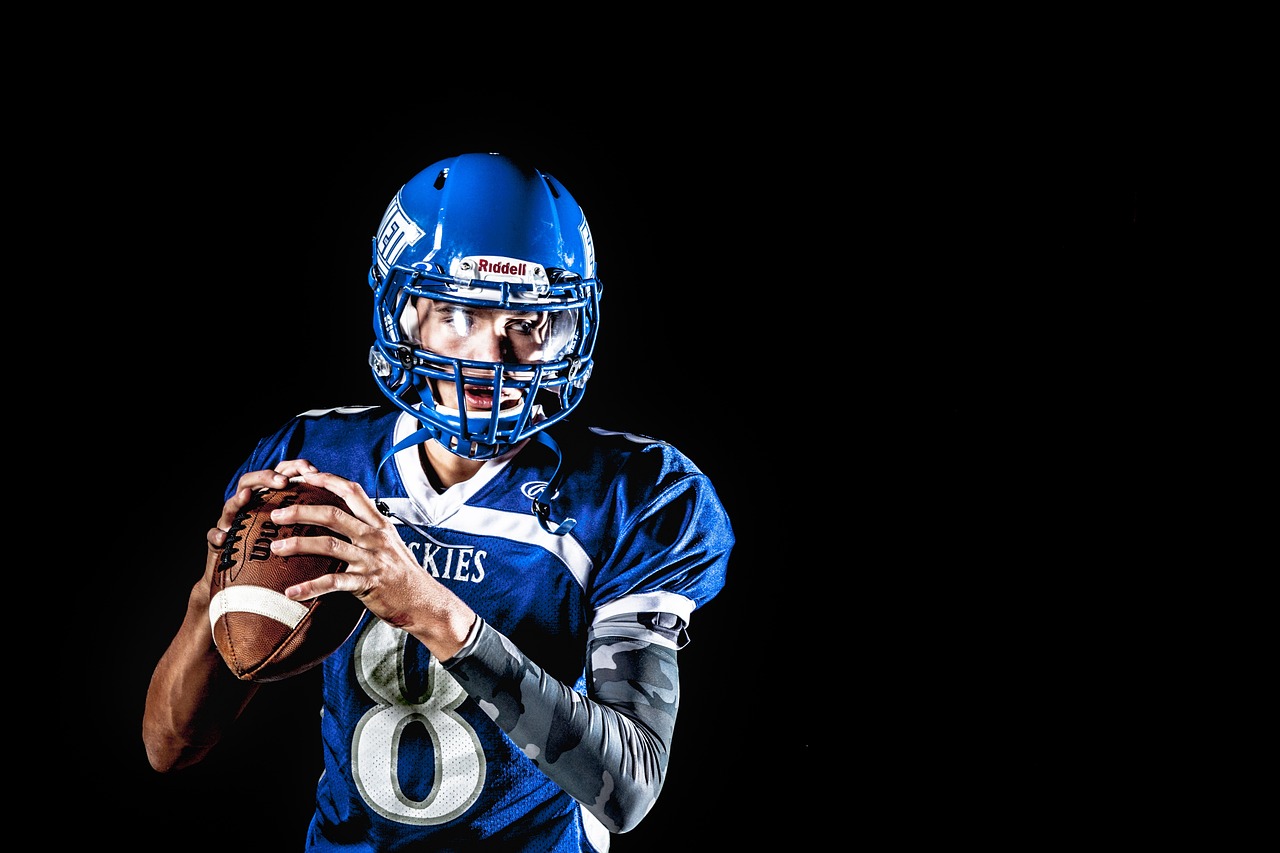
Exercise Requirements
American Bulldogs are not just your average couch potatoes; they are active and energetic dogs that thrive on regular exercise. These muscular companions need a good amount of physical activity to keep their bodies healthy and their minds sharp. Think of them as the athletes of the dog world—they need to run, jump, and play to stay fit and happy. A daily routine filled with exercise not only helps maintain their weight but also combats behavioral issues that can arise from boredom.
To ensure your American Bulldog stays in top shape, aim for at least 60 to 90 minutes of exercise each day. This can include a mix of activities such as:
- Daily walks: A brisk walk around the neighborhood is a fantastic way to start the day.
- Playtime: Engaging your bulldog in games like fetch or tug-of-war can be both fun and physically demanding.
- Agility training: Setting up an obstacle course in your backyard can provide both mental and physical stimulation.
- Obedience classes: These not only teach essential commands but also offer a structured way to exercise.
But it's not just about the duration of the exercise; the quality matters too. Mixing up activities helps keep things interesting for your dog. For instance, you might take them to a dog park one day, and the next, you could explore hiking trails together. The key is to ensure that your bulldog is engaged and enjoying their time outdoors.
It's important to watch for signs of fatigue or overheating, especially in warmer weather. American Bulldogs can be prone to heat exhaustion due to their stocky build, so always have fresh water available and take breaks as needed. After all, you want to keep their spirits high, not low!
In conclusion, providing your American Bulldog with the right amount of exercise is crucial for their health and happiness. Regular physical activity will not only strengthen your bond but also help them live a longer, more fulfilling life. So, lace up those shoes, grab that leash, and get ready for some quality time with your furry friend!
Q: How much exercise does an American Bulldog need?
A: American Bulldogs typically require 60 to 90 minutes of exercise each day to stay healthy and happy.
Q: Can I exercise my American Bulldog in hot weather?
A: It's important to be cautious in hot weather. Always provide fresh water and take breaks to prevent overheating.
Q: What are some fun activities to do with my American Bulldog?
A: Activities such as fetch, agility training, and obedience classes are great ways to exercise and bond with your bulldog.
Q: Are American Bulldogs good for families?
A: Yes! American Bulldogs are known for their loyalty and can be excellent family pets, especially with proper socialization.
Recommended Activities
This article explores the unique traits, behaviors, and history of the American Bulldog, providing insights for potential owners and enthusiasts about this loyal and versatile breed.
American Bulldogs possess a muscular build and a broad head, showcasing their strength and agility. Their coat is short and comes in various colors, making them visually striking companions.
Known for their loyalty and protective nature, American Bulldogs are often affectionate with families. Understanding their temperament helps in training and socialization, ensuring they thrive as loving pets.
American Bulldogs typically exhibit a friendly demeanor towards humans but may be wary of strangers. Early socialization is crucial for developing a well-adjusted adult dog.
These dogs often form strong bonds with children, making them excellent family pets. Supervised interactions can enhance their protective instincts while ensuring safety and fun.
While they can coexist with other animals, proper introductions and training are essential to prevent territorial behaviors and promote harmony in multi-pet households.
Training an American Bulldog requires consistency and positive reinforcement. Their intelligence and eagerness to please make them responsive to effective training methods.
American Bulldogs are active dogs needing regular exercise to maintain their physical and mental health. Daily walks, playtime, and engaging activities are vital for their well-being.
Engaging your American Bulldog in various activities is not just fun; it's essential for their overall health and happiness. These dogs thrive on physical and mental stimulation, so incorporating a mix of activities into their routine can keep them excited and fulfilled.
Consider activities such as:
- Agility Training: This can be an exhilarating way for your dog to use their natural athleticism. Setting up an agility course in your backyard or participating in local agility classes can improve their coordination and confidence.
- Fetch: A classic game that never gets old! Playing fetch helps burn off energy and strengthens the bond between you and your dog. Just be sure to use a safe, soft ball to prevent any injuries.
- Obedience Classes: These classes not only teach commands but also provide socialization opportunities with other dogs. This is crucial for a breed that can be wary of strangers.
In addition to these structured activities, simple daily routines like going for long walks or engaging in tug-of-war can be incredibly fulfilling for your American Bulldog. The key is to keep things varied and exciting. Remember, a bored dog can lead to destructive behavior, so mixing up playtime with new challenges is essential. Always observe your dog's reactions and adjust activities to suit their energy levels and interests.
Understanding common health issues in American Bulldogs, including hip dysplasia and skin allergies, is essential for responsible ownership and ensuring a long, healthy life.
Regular veterinary check-ups, a balanced diet, and appropriate exercise can help prevent many health issues, promoting the overall well-being of American Bulldogs.
Being aware of genetic predispositions can aid in making informed decisions regarding breeding and health screenings, ultimately contributing to the breed's longevity and vitality.
In summary, American Bulldogs are loyal, intelligent, and strong companions. Understanding their characteristics, needs, and potential challenges is key to providing them with a fulfilling life.
- What is the average lifespan of an American Bulldog?
The average lifespan of an American Bulldog is typically between 10 to 16 years, depending on factors like genetics and care.
- Are American Bulldogs good with children?
Yes, American Bulldogs are known for their affectionate nature and often form strong bonds with children, making them excellent family pets.
- How much exercise do American Bulldogs need?
These dogs require at least 30 to 60 minutes of exercise daily to maintain their physical and mental health.
- Do American Bulldogs have any common health issues?
Common health issues include hip dysplasia, skin allergies, and obesity. Regular veterinary check-ups can help monitor and manage these concerns.
Signs of Boredom
This article explores the unique traits, behaviors, and history of the American Bulldog, providing insights for potential owners and enthusiasts about this loyal and versatile breed.
American Bulldogs possess a muscular build and a broad head, showcasing their strength and agility. Their coat is short and comes in various colors, making them visually striking companions.
Known for their loyalty and protective nature, American Bulldogs are often affectionate with families. Understanding their temperament helps in training and socialization, ensuring they thrive as loving pets.
American Bulldogs typically exhibit a friendly demeanor towards humans but may be wary of strangers. Early socialization is crucial for developing a well-adjusted adult dog.
These dogs often form strong bonds with children, making them excellent family pets. Supervised interactions can enhance their protective instincts while ensuring safety and fun.
While they can coexist with other animals, proper introductions and training are essential to prevent territorial behaviors and promote harmony in multi-pet households.
Training an American Bulldog requires consistency and positive reinforcement. Their intelligence and eagerness to please make them responsive to effective training methods.
American Bulldogs are active dogs needing regular exercise to maintain their physical and mental health. Daily walks, playtime, and engaging activities are vital for their well-being.
Activities such as agility training, fetch, and obedience classes provide mental stimulation and physical exercise, enhancing the bond between the dog and its owner.
Recognizing the in your American Bulldog is crucial for ensuring their happiness and well-being. These dogs are intelligent and energetic, and without enough stimulation, they can quickly become discontent. Common signs include:
- Destructive Behavior: If your dog starts chewing on furniture, shoes, or other household items, it might be a sign that they are not getting enough mental or physical stimulation.
- Excessive Barking: While some barking is normal, an increase in barking can indicate that your dog is trying to express their frustration or boredom.
- Restlessness: If your American Bulldog seems unable to settle down or is constantly pacing, it may be a signal that they need more activity.
- Seeking Attention: Dogs that are bored often seek out their owners for interaction, which can manifest as nudging, whining, or following you around the house.
- Overeating or Loss of Appetite: Changes in eating habits can also be a sign of boredom or stress. Pay attention to their feeding routine and adjust as necessary.
To keep your American Bulldog engaged, consider incorporating a variety of activities into their daily routine. Regular exercise, interactive toys, and training sessions can help alleviate boredom and keep your furry friend happy. Remember, a well-stimulated dog is a happy dog!
Understanding common health issues in American Bulldogs, including hip dysplasia and skin allergies, is essential for responsible ownership and ensuring a long, healthy life.
Regular veterinary check-ups, a balanced diet, and appropriate exercise can help prevent many health issues, promoting the overall well-being of American Bulldogs.
Being aware of genetic predispositions can aid in making informed decisions regarding breeding and health screenings, ultimately contributing to the breed's longevity and vitality.
In summary, American Bulldogs are loyal, intelligent, and strong companions. Understanding their characteristics, needs, and potential challenges is key to providing them with a fulfilling life.
1. How much exercise does an American Bulldog need?
American Bulldogs require at least 1 hour of exercise daily, which can include walks, playtime, and training sessions.
2. Are American Bulldogs good with children?
Yes, they are known for forming strong bonds with children, but supervision is always recommended during interactions.
3. What are common health issues in American Bulldogs?
Common health issues include hip dysplasia, skin allergies, and obesity, so regular vet check-ups are essential.
4. How can I keep my American Bulldog entertained?
Engage them with interactive toys, regular exercise, and training sessions to keep their minds and bodies active.
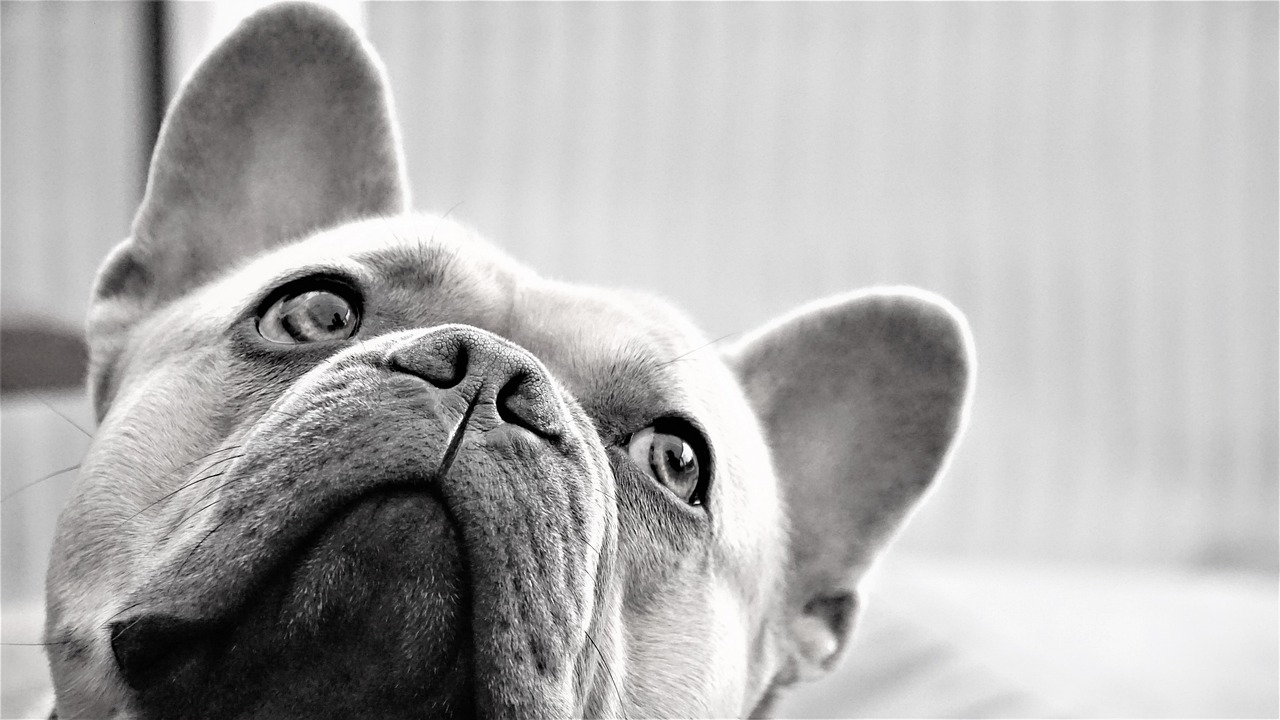
Health Considerations
When it comes to the American Bulldog, understanding their health is crucial for any responsible owner. Just like us, these dogs can face a variety of health issues throughout their lives. Some of the most common concerns include hip dysplasia, skin allergies, and even certain heart conditions. Knowing about these potential problems can help you take proactive steps to ensure your furry friend lives a long and healthy life.
Hip dysplasia is a genetic condition that affects many dog breeds, including the American Bulldog. This condition occurs when the hip joint doesn’t fit properly into the hip socket, leading to arthritis and pain. Regular check-ups with the vet can help spot this issue early on, allowing for effective management through medication or lifestyle changes.
Another common issue is skin allergies, which can manifest as itching, redness, or even hair loss. These allergies can be caused by various factors, including food, environmental allergens, or parasites. It's essential to identify the cause of the allergy, which may require a visit to the vet for allergy testing. Once identified, dietary adjustments or medications can significantly improve your dog's quality of life.
To give you a clearer picture of the health considerations for American Bulldogs, here’s a table summarizing some common health issues:
| Health Issue | Description | Preventive Measures |
|---|---|---|
| Hip Dysplasia | A genetic condition affecting the hip joint. | Regular vet check-ups, maintaining a healthy weight. |
| Skin Allergies | Itching and irritation due to allergens. | Allergy testing, proper grooming, and diet management. |
| Heart Conditions | Various heart diseases can affect Bulldogs. | Regular vet check-ups and a balanced diet. |
Preventive care is vital. Regular veterinary visits, a balanced diet, and appropriate exercise can help mitigate many health issues. Keeping your American Bulldog at a healthy weight is crucial, as obesity can exacerbate many health problems, including joint issues and heart disease. Furthermore, ensuring they receive routine vaccinations and parasite control is essential to keep them healthy.
Being aware of genetic concerns is also important. American Bulldogs can be predisposed to certain conditions due to their breeding. Responsible breeding practices can significantly reduce the risk of genetic health issues, so if you’re considering bringing a new puppy into your home, make sure to do your research on the breeder’s practices.
- What are the common health issues in American Bulldogs?
Common issues include hip dysplasia, skin allergies, and heart conditions. - How can I maintain my American Bulldog's health?
Regular vet check-ups, a balanced diet, and exercise are key. - Are American Bulldogs prone to obesity?
Yes, they can gain weight easily, so it's essential to monitor their diet and exercise. - What should I do if my dog shows signs of allergies?
Consult your vet for allergy testing and treatment options.
Preventive Care
When it comes to keeping your American Bulldog healthy and happy, is absolutely essential. Think of it as a shield that protects your furry friend from potential health issues before they even arise. Regular veterinary check-ups should be a top priority on your list. These visits allow your vet to catch any early signs of problems, ensuring that your dog stays in tip-top shape. Ideally, you should schedule annual check-ups, but if your dog is older or has specific health concerns, more frequent visits may be necessary.
In addition to regular vet visits, a balanced diet plays a crucial role in your dog's overall health. American Bulldogs thrive on high-quality dog food that suits their age, weight, and activity level. Always consult your vet for recommendations tailored to your dog's specific needs. A well-balanced diet not only supports their physical health but also boosts their immune system, making them less susceptible to illnesses.
Don’t forget about exercise! American Bulldogs are energetic creatures that require daily physical activity. Regular exercise helps maintain a healthy weight and reduces the risk of obesity-related conditions. Engaging your dog in activities like walking, playing fetch, or even agility training can keep them fit and mentally stimulated. If you notice your pup becoming lethargic or gaining weight, it might be time to reassess their exercise routine.
Another important aspect of preventive care is being aware of common health issues that American Bulldogs face. Conditions such as hip dysplasia, skin allergies, and heart problems can affect their quality of life. Here’s a quick overview of some potential health concerns:
| Health Issue | Symptoms | Preventive Measures |
|---|---|---|
| Hip Dysplasia | Difficulties in movement, limping | Maintain a healthy weight, regular vet check-ups |
| Skin Allergies | Itching, redness, hair loss | Regular grooming, avoid known allergens |
| Heart Problems | Coughing, fatigue, difficulty breathing | Regular vet check-ups, healthy diet |
By keeping these health considerations in mind, you can help your American Bulldog live a long and healthy life. Remember, knowledge is power! The more you know about your dog's health needs, the better equipped you'll be to provide the care they deserve. So, stay proactive and keep that tail wagging!
- How often should I take my American Bulldog to the vet? It's recommended to have annual check-ups, but older dogs or those with health issues may need more frequent visits.
- What is the best diet for an American Bulldog? Consult your veterinarian for personalized recommendations, but generally, a high-quality dog food suitable for their age and activity level is ideal.
- What are common signs of health issues in American Bulldogs? Look out for changes in behavior, appetite, weight, or mobility, and consult your vet if you notice anything unusual.
Genetic Concerns
This article explores the unique traits, behaviors, and history of the American Bulldog, providing insights for potential owners and enthusiasts about this loyal and versatile breed.
American Bulldogs possess a muscular build and a broad head, showcasing their strength and agility. Their coat is short and comes in various colors, making them visually striking companions.
Known for their loyalty and protective nature, American Bulldogs are often affectionate with families. Understanding their temperament helps in training and socialization, ensuring they thrive as loving pets.
American Bulldogs typically exhibit a friendly demeanor towards humans but may be wary of strangers. Early socialization is crucial for developing a well-adjusted adult dog.
These dogs often form strong bonds with children, making them excellent family pets. Supervised interactions can enhance their protective instincts while ensuring safety and fun.
While they can coexist with other animals, proper introductions and training are essential to prevent territorial behaviors and promote harmony in multi-pet households.
Training an American Bulldog requires consistency and positive reinforcement. Their intelligence and eagerness to please make them responsive to effective training methods.
American Bulldogs are active dogs needing regular exercise to maintain their physical and mental health. Daily walks, playtime, and engaging activities are vital for their well-being.
Activities such as agility training, fetch, and obedience classes provide mental stimulation and physical exercise, enhancing the bond between the dog and its owner.
Recognizing signs of boredom, such as destructive behavior or excessive barking, can help owners adjust their routines to keep their American Bulldog engaged and happy.
Understanding common health issues in American Bulldogs, including hip dysplasia and skin allergies, is essential for responsible ownership and ensuring a long, healthy life.
Regular veterinary check-ups, a balanced diet, and appropriate exercise can help prevent many health issues, promoting the overall well-being of American Bulldogs.
Being aware of genetic predispositions can aid in making informed decisions regarding breeding and health screenings, ultimately contributing to the breed's longevity and vitality. American Bulldogs are prone to certain genetic disorders that can affect their quality of life. Some of the most common genetic concerns include:
- Hip Dysplasia: A hereditary condition where the hip joint doesn't fit snugly into the hip socket, leading to arthritis and pain.
- Skin Allergies: Many American Bulldogs suffer from allergies that can cause itching, redness, and infections.
- Heart Conditions: Certain heart diseases can be inherited, making regular veterinary check-ups crucial.
To mitigate these concerns, prospective owners should seek out reputable breeders who conduct health screenings for both the parents and puppies. This can significantly reduce the risk of inherited health issues. Additionally, being proactive about health can lead to early detection and treatment, ensuring that your American Bulldog enjoys a long and happy life.
In summary, American Bulldogs are loyal, intelligent, and strong companions. Understanding their characteristics, needs, and potential challenges is key to providing them with a fulfilling life.
- What is the average lifespan of an American Bulldog? The average lifespan is around 10 to 16 years, depending on health and care.
- Are American Bulldogs good with children? Yes, they are known to be affectionate and protective, making them great family pets.
- How much exercise do American Bulldogs need? They require at least 30 to 60 minutes of exercise daily to stay healthy and happy.
- Do American Bulldogs have a lot of health problems? Like all breeds, they can be prone to certain health issues, but responsible breeding can help minimize these risks.
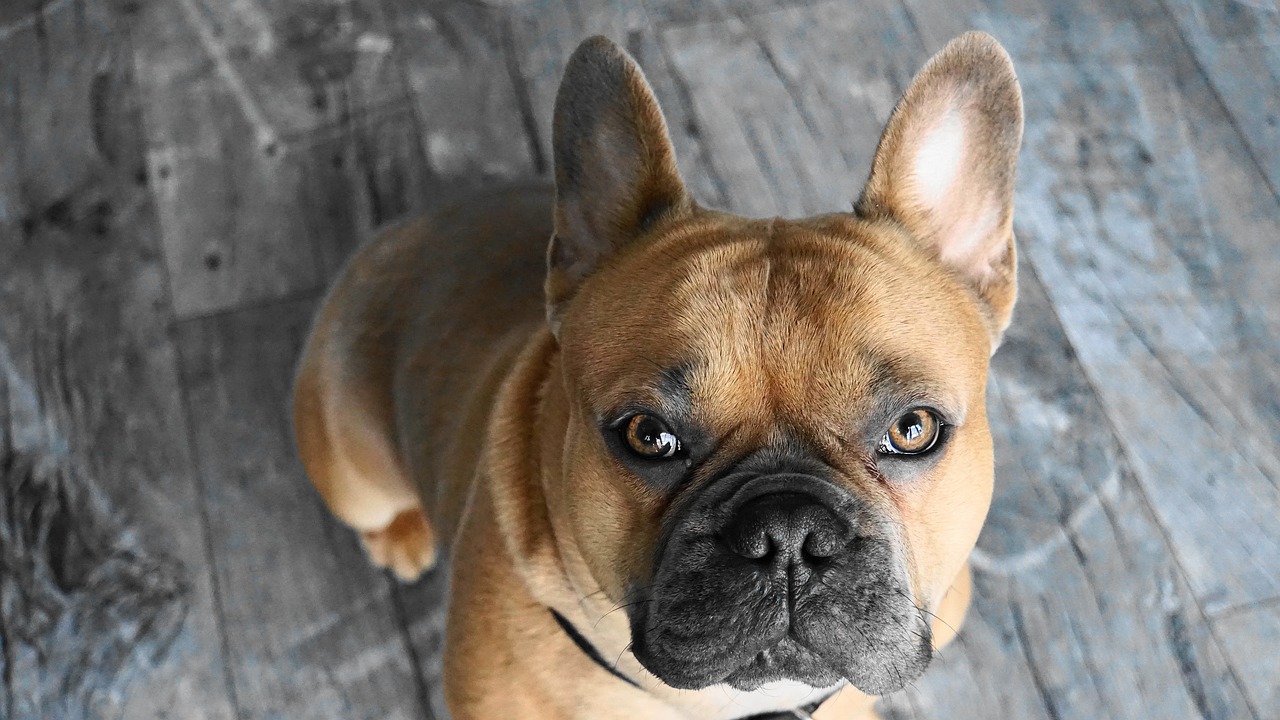
Conclusion
In summary, the American Bulldog stands out as a remarkable breed characterized by its loyalty, intelligence, and strength. These dogs are not just pets; they become integral members of the family, offering unwavering companionship and protection. Understanding their unique traits and requirements is essential for anyone considering bringing one into their home. From their muscular build and striking appearance to their affectionate nature, American Bulldogs have a lot to offer.
As potential owners, it’s crucial to recognize the importance of early socialization and training. These aspects play a significant role in shaping their behavior and ensuring they grow into well-adjusted adults. Engaging in activities that stimulate both their minds and bodies can lead to a happier, healthier dog. Moreover, being aware of their health considerations, such as common genetic issues, helps in making informed decisions that contribute to their longevity.
Ultimately, the journey of owning an American Bulldog can be incredibly rewarding. With the right knowledge and commitment, you can foster a loving relationship with your dog that lasts a lifetime. Remember, a well-cared-for American Bulldog is not just a pet; it’s a loyal friend who will stand by your side through thick and thin.
- What is the average lifespan of an American Bulldog?
The average lifespan of an American Bulldog is typically between 10 to 16 years, depending on various health factors and care.
- How much exercise do American Bulldogs need?
American Bulldogs require at least 30 to 60 minutes of exercise daily to keep them physically and mentally stimulated.
- Are American Bulldogs good with children?
Yes, American Bulldogs are known to be gentle and protective around children, making them excellent family pets when properly socialized.
- What are common health issues in American Bulldogs?
Common health issues include hip dysplasia, skin allergies, and certain genetic conditions, which can be managed with proper veterinary care.
- Do American Bulldogs require special training?
While they are intelligent and eager to please, American Bulldogs benefit from consistent training methods that utilize positive reinforcement.
Frequently Asked Questions
- What are the key physical traits of an American Bulldog?
American Bulldogs are known for their muscular build, broad head, and strong physique. Their short coat comes in various colors, making them visually striking companions. This breed's physical characteristics are a testament to their strength and agility, which are essential for their active nature.
- How do American Bulldogs typically behave around children?
These dogs often form strong bonds with children, making them excellent family pets. Their affectionate nature means they enjoy playtime and companionship, but it's crucial to supervise interactions to ensure safety and promote positive experiences.
- What training methods work best for American Bulldogs?
Training an American Bulldog requires consistency and positive reinforcement. They are intelligent and eager to please, which makes them responsive to effective training methods. Using rewards and praise during training can lead to better results and a stronger bond between the dog and owner.
- How much exercise does an American Bulldog need?
American Bulldogs are active dogs that need regular exercise to maintain their physical and mental health. Daily walks, playtime, and engaging activities are vital for their well-being. Without enough exercise, they can become bored and potentially develop destructive behaviors.
- What common health issues should I be aware of with American Bulldogs?
Some common health concerns in American Bulldogs include hip dysplasia and skin allergies. Being aware of these issues is essential for responsible ownership. Regular veterinary check-ups, a balanced diet, and proper exercise can help prevent many health problems.
- How can I help prevent health issues in my American Bulldog?
Preventive care is key! Regular veterinary check-ups, maintaining a balanced diet, and ensuring your dog gets ample exercise can significantly contribute to their overall health. Additionally, being informed about genetic predispositions can help you make better decisions regarding breeding and health screenings.

